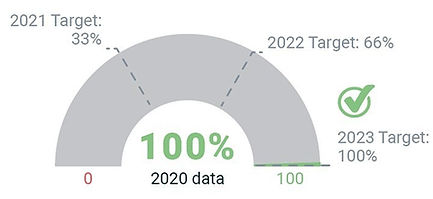
safety

Providing a safe transportation system for all users is a top priority for our region. Over the last five years, the number of vehicle-related fatalities and serious injuries has trended downward, while the number of bicycle and pedestrian fatalities has stayed relatively flat. While we have continued to improve the safety of our roadways for vehicles, we have failed to provide the same safety improvements for those walking and biking.
fatalities & serious injuries
2019 - 2023 KDOT Data


safety performance measures
PM 1: Number of Vehicle Fatalities
PM 3: Number of Serious Injuries
PM 5: Non-Motorized Fatalities & Serious Injuries
PM 7: % of Public Transit Buses with Cameras
_edited_edited_edited.jpg)
The Flint Hills Area Transportation Agency (ATA Bus) has 35 vehicles. Each had a camera installed in 2021, well ahead of the 2023 target.
PM 2: Rate of Vehicular Fatalities per 100 Million Vehicle Miles Traveled
PM 4: Rate of Serious Injuries per 100 Million Vehicle Miles Traveled
PM 6: % Serious Injury & Fatality Crashes with Bicycles & Pedestrians

Despite comprising only 9% of commuting mode share, people walking and biking are involved in 15% of all serious injury and fatality crashes. This percentage has steadily increased over the last five years.
PM 8: # of Public Transit Related Fatalities & Serious Injuries

The ATA Bus had no transit-related fatalities or serious injuries between 2016 and 2018. Public transit remains one of the safest modes of travel in our region.





understanding metrics & Guages
Federally Required Metric
MPOs are federally required to use a performance-based approach for guiding transportation investment and policy decisions. Transportation legislation identifies several performance metrics MPOs must monitor, establish targets for, and report on.
Flint Hills MPO Metric
MPOs can choose to establish additional goals and targets specific to their region.


Further detail & resources
Complete annual Safety PM reports
In line with Federal Highway Administration (FHWA) and Kansas Department of Transportation (KDOT) regulations, the MPO has developed our region's Safety Performance Measures. In addition, the MPO has established future Targets aimed at creating a safer transportation system